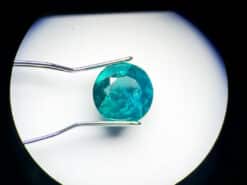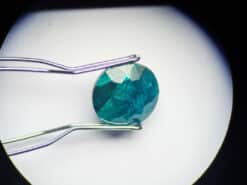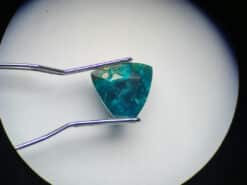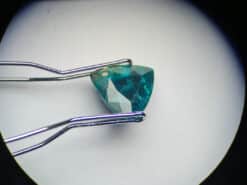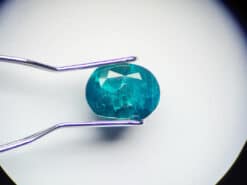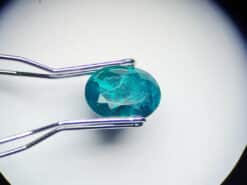Dioptase
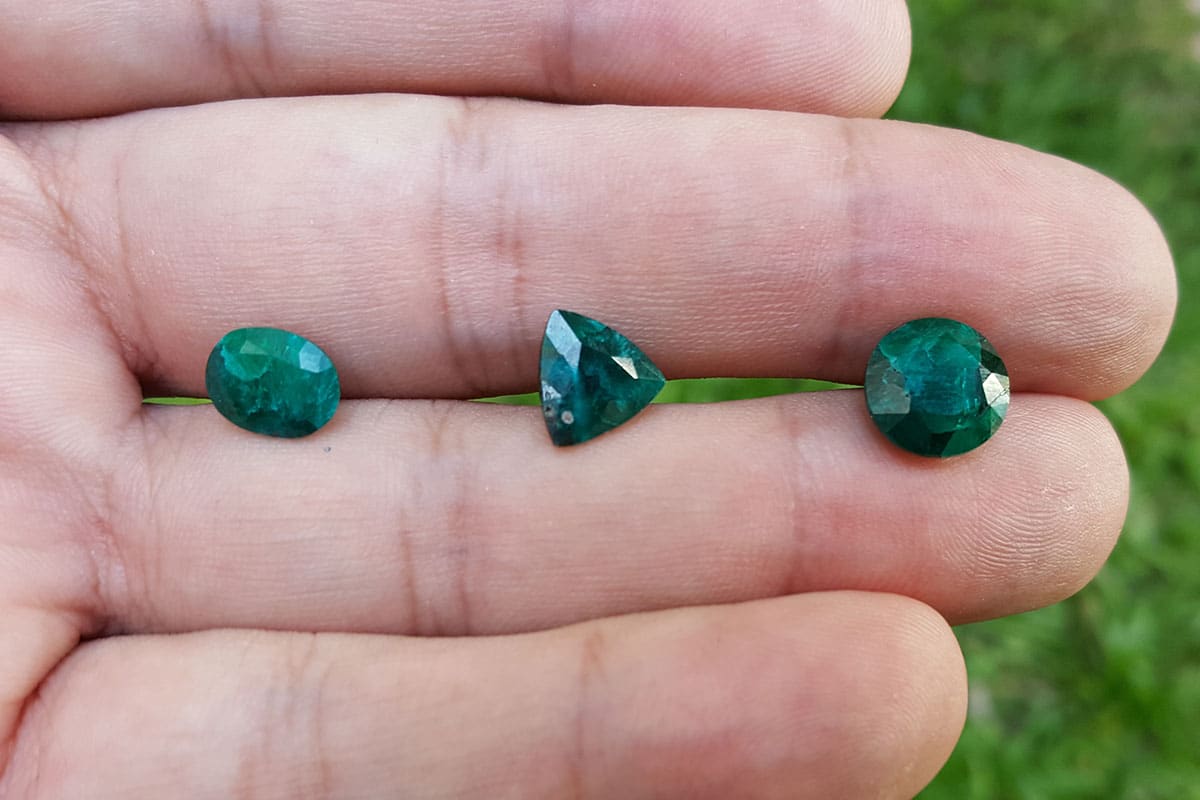
Dioptase crystal stone mineral gemstone.
Buy natural dioptase in our shop
The term dioptase refers to a mineral of the class of silicates, a subclass of cyclosilicates. Its chemical formula is CuSiO3 • H2O.
The crystal is an intense emerald green to bluish green copper cyclosilicate mineral. It is transparent to also translucent. Its luster is vitreous to sub-adamantine. Its formula is CuSiO3·H2O. Also as CuSiO2(OH)2). It has a hardness of 5. Similarly as tooth enamel.
Its specific gravity is 3.28–3.35. And it has two perfect and one very good cleavage directions. Additionally, The mineral is very fragile. Some specimens must be handled with great care. It is a trigonal mineral. It forms in 6side crystals. They have rhombohedral terminations.
History
At the end of the eighteenth century, the German mineralogist Moritz Rudolph Ferber first became interested in this mineral. But he defines it erroneously as an emerald. And it was the French mineralogist René Just Haüy who, in 1797, proved that it was a mineral by itself and gave it the name dioptase.
The name comes from the Greek dia (” Through “) and optazo (” I see “). It refers to the fact that the traces of the cleavage planes can be visible through its crystals.
We also found topotype in the Altyn-Tyube copper mine, in the Kirghese steppes in Oblys of Karaganda, Kazakhstan.
Another, the stone forms transparent prismatic crystals to translucent, vitreous luster. It is emerald green to dark blue-green. Its line is green and its fracture is conchoidal. Its hardness, 5 on the Mohs scale, is average.
With the blowpipe, the gemstopne does not melt but blackens by coloring the flame in green. It is soluble in nitric acid and hydrochloric acid.
Furthermore, the stone is popular with mineral collectors. We sometimes cut it into small emerald like gems. Dioptase and also chrysocolla are the only relatively common copper silicate minerals. The stone should never be exposed to ultrasonic cleaning orthewise the fragile gem will shatter. As a ground pigment, The gemstone can also be used in painting.
Finally, the most famous and expensive stone locality is at Tsumeb, Namibia.
Dioptase crystal meaning and healing properties benefits
The following section is pseudo scientific and based on cultural beliefs.
The crystal is a vibrant talisman of the heart that can help one relinquish extremely sensitive emotions such as grief, trauma, depression, anxiety, and self-hate. This special mineral exposes one’s heart and brings about soothing waves of life force energy that helps “reset” one’s emotional body.
Dioptase, from Tanzania
FAQ
What is dioptase used for?
The crystal can help to relieve mental stress, allow for complete relaxation, and enhance the meditative state. It can be used to clear and stimulate all chakras to the higher level of awareness and action, bringing an invigorating and refreshing energy to the physical, emotional and intellectual bodies.
What is dioptase worth?
The worth and value of the stone will increase for specimens with more crystals and larger crystals… Since the stone is typically sold as a beautiful eye catching specimen you can expect a nice palm sized specimen with moderate sized crystals to run you upwards of $100 USD.
Is dioptase a gemstone?
The mineral is known as the gem of the Congo. Other names for it include copper emerald and achrite. Dioptase is a hydrated copper silicate that is highly valued by mineral collectors. The crystals usually take the form of short, six-sided prisms, often terminated by rhombohedra.
Is dioptase the same as diopside?
Not at all. Dioptase is an intense emerald-green to bluish-green copper cyclosilicate mineral. diopside is a monoclinic pyroxene mineral, a magnesium calcium silicate with the chemical formula CaMgSi2O6, found in igneous and metamorphic rocks.
Where can I get dioptase?
The finest specimens of all were found at the Tsumeb Mine in Tsumeb, Namibia. Tsumeb dioptase is transparent and often highly sought after by collectors. The gemstone is also found in the deserts of the southwestern US.

